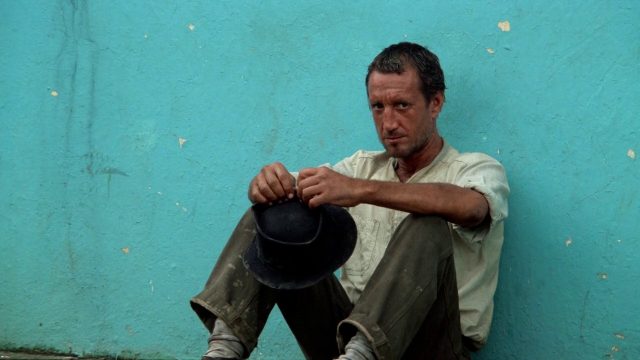In 1977, two directors capitalized on their previous films’ world-beating successes by releasing their newest films within weeks of each other. Both films from these exemplars of the “New Hollywood” era suffered from protracted production and lack of faith from their respective studios. Taken together, they become emblematic of the failure of the director-driven 70s filmmaking and the beginning of a new era of blockbuster filmmaking.
One of these movies was George Lucas’s American Graffiti follow-up Star Wars, which of course became the highest-grossing film of all time up until that point, received 10 Oscar nominations, and became a franchise that is still going to this day. Compared to Star Wars, William Friedkin’s Sorcerer was less successful, in that it bombed with audiences, received negative reviews from critics, and lost its sole Oscar race (for Best Sound) to Star Wars.
To be fair, Sorcerer had a lot working against it. As a remake of a classic French film, The Wages of Fear, it was always going to invite accusations that it was dumbing down its material for an American audience. And there’s some merit to that charge. In The Wages of Fear, the town of Las Piedras where the central characters find themselves at the beginning of the film is mostly a purgatory by implication; we never learn much about the lives of our protagonists before they ended up there, but the languages they speak and their overall demeanor give us all the backstory we need. Compare this to Sorcerer’s long prologue, where we learn exactly what drove each character to end up in Porvenir, the Latin American village that takes the place of Las Piedras. Then there’s the endings of each film: in The Wages of Fear, Mario (Yves Montand) controls his own fate, whereas in Sorcerer, Jackie Scanlon (Roy Scheider) is undone by external forces. For critics at the time, it was exceedingly easy to look at Sorcerer and accuse it of replacing subtlety with bombast. Audiences weren’t receptive either; the first fifteen minutes aren’t in English, which caused many to walk out. And by calling his film Sorcerer, Friedkin primed audiences to expect something similar to his previous film, The Exorcist. Both of these caused movie theaters to put up disclaimers that the film is primarily in English and that it was not a film about the supernatural.
But Friedkin was setting out to do something different with Sorcerer. Friedkin was always something of a strange fit with the other filmmakers of the New Hollywood era; he shared their love of complex themes, but his command of action and horror filmmaking put his films closer to something like Jaws. One only need watch The French Connection or its spiritual sequel To Live and Die in LA to understand that Friedkin has an anti-authoritarian streak a mile wide. In many ways, The Exorcist (Friedkin’s highest-grossing film) was something of an outlier in his filmography, retaining his usual technical craft but functioning almost as a piece of Catholic propaganda. Sorcerer deals with its anti-authoritarian themes mostly through visual iconography. Coke bottles abound in Porvenir, a symbol of encroaching US imperialism. There’s also a brutal dictator that the film implies is being propped up by the United States government and the oil company that sends the central characters on their mission to transport dynamite across the jungle. Sorcerer, like The Wages of Fear, prefers to subtly suggest its themes to the viewer rather than spell them out.
It’s also just a viscerally exciting film. An early scene of the four drivers fixing up the trucks for their mission is a masterpiece of editing and cinematography, all set to Tangerine Dream’s score (their first and arguably their best). The scene feels almost like a progenitor to the music videos that would follow in the coming decade. And a suspension bridge sequence piles on complication after complication until the impossibility of the task before the drivers becomes almost too much to bear. And still Friedkin never gives us a chance to breathe.
It’s perhaps too easy to draw parallels between Friedkin making a film about four men going through hell on a mission doomed by fate and circumstance and Sorcerer’s production difficulties and ultimate failure. Like many of the films responsible for ending the auteur-driven ’70s, Sorcerer has only grown in stature since its ignominious failure. In recent years, some critics have declared it an overlooked masterpiece, and it’s no surprise that Uncut Gems co-director Benny Safdie placed it on his top ten list for Sight & Sound. It will never be as well-loved as Star Wars, but it stands tall as Friedkin’s best.

